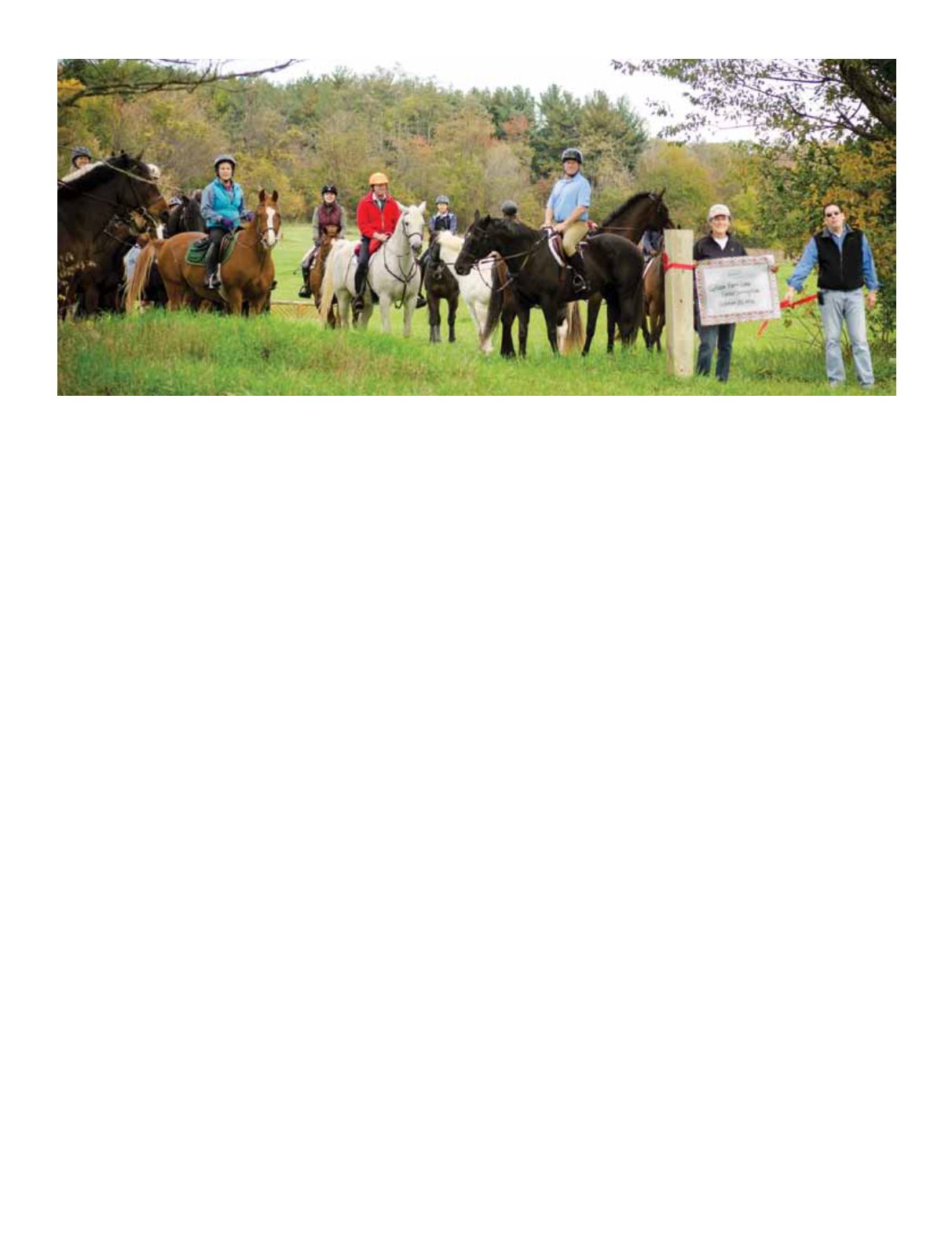
FOR HORSE PEOPLE • ABOUT HORSE PEOPLE
SIDELINES APRIL 2014 153
Park at the heart of the green corridor between the Potomac and
the Patuxent rivers links more than 5,000 acres of protected land.
It was a major accomplishment and Mike was hooked.
After acquiring that land, Mike learned from a 1983 study, con-
ducted for the owners at that time, about the existence of 100-mil-
lion tons of rare diatomic stone under the property and that the
development plans included strip mining the entire property be-
fore turning it into a natural gas facility. “I gave up a possible
$300-million profit from the stone,” said Mike. “I was also offered
more than my purchase price for just 120 acres for a housing
development which I turned down, given the risk of setting a prec-
edent for further development into the Reserve.” Mike continued
buying up farms for preservation. He is still at it and currently in
the process of buying his 14th farm under development threat in
the town of Poolesville, Maryland.
Lest anyone think that this is the typical “buy now, pave lat-
er” mentality of some developers, nothing could be further from
Mike’s objectives. “I never did this, thinking that buying these
farms was going to be economically viable for me – I have done
okay on some of them, but with others I have left a lot of money
on the table,” Mike said candidly. “I bought these properties be-
cause I felt driven to protect the farmland and the equestrian life
and the wildlife and, obviously, the overall environment – these
are really the things that motivated me. It had nothing to do with
money. In the end we cannot survive without food, clean air and
water.”
In 1980 Montgomery County had established an Agricultural
Reserve – not preserve, reserve – consisting of nearly 100,000
rural acres, almost one-third of the county’s total land mass. “It
was one of the best land conservation policies in the country,”
said Mike. “Because of the way the situation was set up in Mont-
gomery County and the backing from Maryland, I was able, in
some cases, to strip off the development rights to farmland. Af-
ter I started saving farms, some other farmers, who had thought
about selling for development, instead preserved their land as
well, even some who were thinking about retirement and initially
wanted money for their land. Suddenly, they saw the light and
started realizing that they could make as much money and come
out ahead by saving their land instead of developing it.”
The 1980 establishment of the Agricultural Reserve entailed a
downzoning of the included land from five to 25 acres; meaning
only one house could be built per 25 acres. The Rural Density
Transfer zone was established and provided for one Transferable
Development Right (TDR) for each five acres of a land holding.
For a 100-acre farm, this would result in 20 TDRs. If the owner
wanted to retain the right for four houses, he would keep four and
be able to sell the other 16 to developers who wanted to increase
residential density in designated down county areas. The fact is
that Montgomery County’s system helped to protect open land,
crop and livestock farms, meadows and forested tracts (see links
at the end for more detailed information). The TDRs allow farm-
ers and landowners to keep their property and receive compen-
sation – a win-win situation.
“TDRs sold for $5,000 to $40,000 each, depending on demand.
Farmers and landowners lucked out because, without selling
their properties, they could keep on farming and get paid for their
Equestrian Partners in Conservation (EPIC) celebrated the grand opening of the Gilliam Farm Loop with a trail ride. The sign is held
by David Tobin, EPIC president/treasurer & Montgomery Parks Equine Resources Coordinator, and Naomi Manders, EPIC board
member. The Gilliam Loop is part of the Breezy Hill Loop, land preserved by Mike Rubin.
Photo by Stacey Nedrow-Wigmore
“I bought these properties because I felt driven to
protect the farmland and the equestrian life and
the wildlife and, obviously, the overall environment
– these are really the things that motivated me. It
had nothing to do with money. In the end we cannot
survive without food, clean air and water.”


